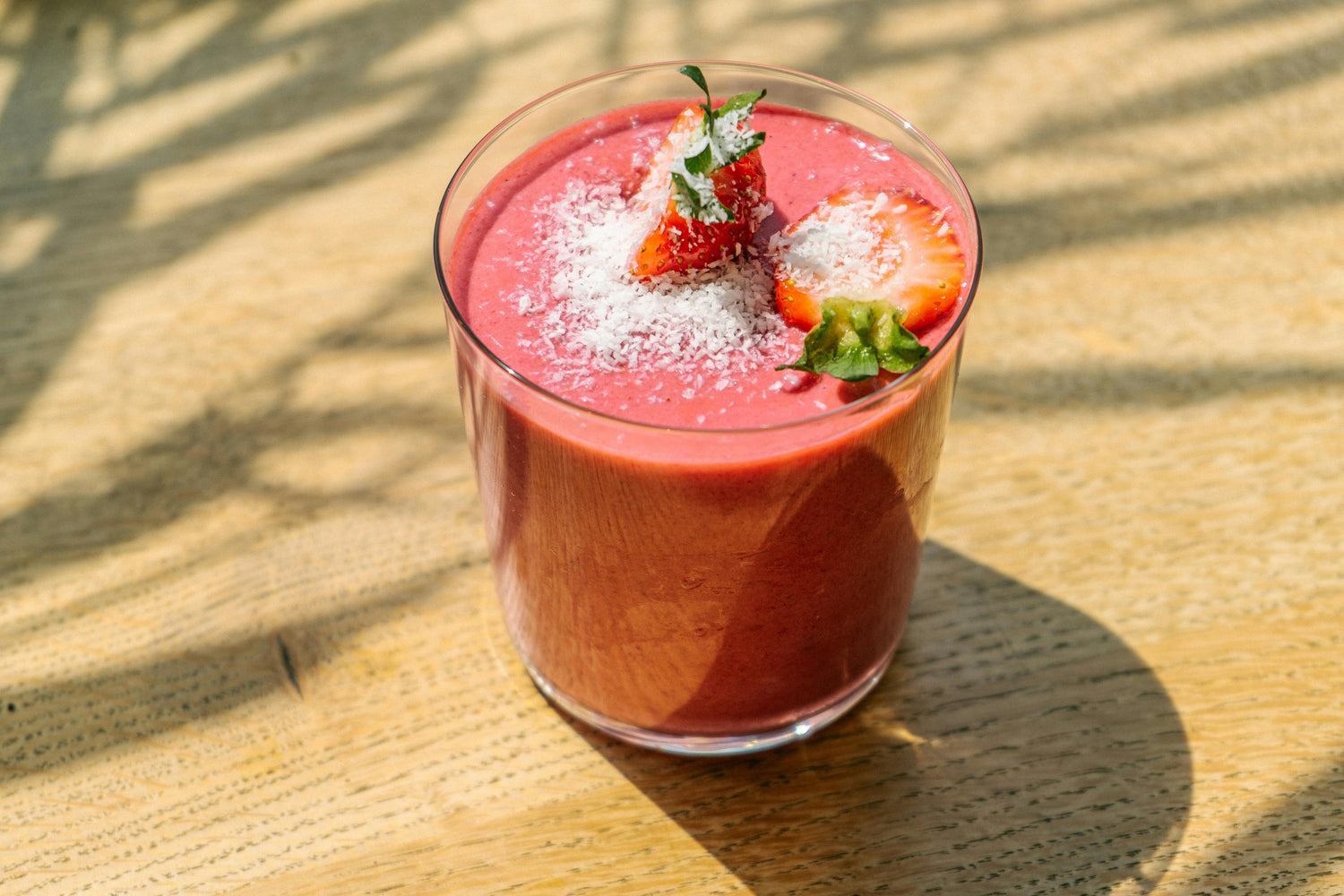
Skincare on Ice? 🧊 The Ultimate Truth About Chilling Your Potions (And Why It ACTUALLY Matters!)
Spill the tea... or should we say, chill the tea? 😉 The internet is buzzing: should your precious skincare elixirs live next to your leftover pizza? Let's dive into the frosty depths of the skincare cold debate and uncover some ice-cold truths!
❄️ What You'll Discover in This Article ❄️
You've seen the adorable mini-fridges invading vanities everywhere. You've heard the whispers: "Chill your Vitamin C!" "Refrigerate your retinol!" But is this just a cool trend, or is there some solid science to back up giving your beauty products the cold shoulder (in a good way)?
Spoiler alert: temperature absolutely plays a starring role in how your skincare performs and lasts. But it's not just about your fridge. Intrigued? Let's break it down.
🧪 The Science Behind Why Cold Storage Works
Think of your favorite active skincare ingredients as tiny, hardworking superstars. But like many stars, they can be a bit... temperamental. They don't like too much heat, light, or air. When things get warm, a few not-so-glamorous things start to happen:
The Great Oxidation Breakdown 💨
Potent antioxidants like Vitamin C are famous for fighting off skin-damaging free radicals. But here's the ironic twist: Vitamin C itself is prone to oxidizing (breaking down) when exposed to warmth, light, and air, losing its superpowers in the process.[1, 2] Studies show that Vitamin C solutions can lose a hefty chunk of their potency in mere weeks at room temperature, and one particularly eye-opening experiment saw over half the Vitamin C vanish after just one week at a warm 35°C (95°F)![1] Chilling your Vitamin C to around 4°C (fridge temp), however, dramatically slows this decay, keeping it in its prime for longer.[3] Even better? Sub-freezing temps make it super stable.[3]
The same goes for Retinoids (hello, Vitamin A!). These anti-aging heroes can lose up to 80% of their oomph after just 6 months at room temperature, and pretty much all of it if things get toasty (around 40°C or 104°F).[7] Cool conditions, around 5°C, keep them much happier and more effective.[8]
And let's not forget delicate peptides and botanical antioxidants from things like grape seed. Lab guidelines suggest peptides are much more stable at 4°C,[9, 10, 11] and research on grape seed extracts in creams showed the best antioxidant activity and stability at, you guessed it, 4°C.[12] Heat is basically a party crasher for these sensitive souls. Even natural oils can go rancid faster when warm.[14]
The Unwanted Microbial Party 🦠
Especially for water-based products, once you open that jar, you're rolling out the welcome mat for tiny microbial gate-crashers. Most of these little critters are "mesophiles," meaning they thrive in moderate room temperatures (20-30°C or 68-86°F)[15] – exactly where your bathroom counter sits. In these cozy conditions, they can multiply like crazy.
But pop that product in the fridge (around 4°C), and you're essentially putting those microbes into slow motion. Their growth dramatically slows down.[15, 16] This is why refrigeration can extend the "freshness" of a product and reduce the risk of it becoming a bacteria buffet.[18, 19] It's the same reason vaccines and many medicines are kept chilled – to maintain stability and prevent microbial growth.[20]
When Good Formulas Go Bad 🌡️
Beyond specific ingredients and microbes, the overall chemical and physical stability of your skincare is way better in the cold. Heat speeds up all sorts of unwanted reactions.[21] Emulsions (those lovely creamy mixtures of oil and water) can separate, colors can change, fragrances can go 'off,' and textures can turn weird. Think of a moisturizer left in a hot car – not pretty!
Cosmetic companies even do "accelerated stability tests," basically baking products at high temps (like 40°C/104°F) for months to simulate years on a shelf.[22, 23] Unsurprisingly, products almost always fare much better when tested for stability at cooler temps like 5°C.[23, 24] Cold helps keep the formula looking, feeling, and smelling like it did the day it was made.
❄️ The Chemistry You Need to Know ❄️
Basic chemistry rule (thanks, Arrhenius![4]): Reaction rates roughly double or triple for every 10°C (18°F) rise in temperature. So, chilling a product from a warm room (say 25°C/77°F) to a fridge (5°C/41°F) can slow down these yucky degradation processes by a factor of 4 to 8 TIMES (or more)! That's HUGE for keeping things fresh.
Wait... If Cold is So Great, Why Isn't Everyone Doing It?
This is where the plot thickens! While chilling products in your fridge can help with what you currently own, the REAL challenge is what happens BEFORE that product ever lands in your shopping bag. Most of the damage and degradation occurs during:
- Storage of raw ingredients (often not temperature controlled)
- Manufacturing processes
- Sitting in warehouses (some major fulfillment centers can expose products to a shocking 155°F/68°C![27])
- Shipping across various climates
- Languishing on retail shelves
A week in a hot warehouse can cause months' worth of decay.[23] So, by the time you buy that serum, it might already be a shadow of its former potent self. Your fridge can't turn back that clock, unfortunately.
💡 This is why, at Wild Ice Botanicals, we're obsessed with a "farm-to-face" cold chain. We meticulously cold-preserve our ingredients and finished products throughout the entire process.[26] This way, we're not just relying on you to chill things at the end; we ensure our skincare reaches you at its absolute peak freshness and potency, minimizing the need for harsh preservatives and maximizing those beautiful results by gently inhibiting all three types of breakdown: oxidation, enzymatic reactions, and bacterial activity.[26]
So, Should YOUR Skincare Take the Polar Plunge? 🐧
- YES, IF: Your product contains highly sensitive actives (Vitamin C, Retinoids, Peptides, natural extracts without robust preservative systems), OR if it's a product from a brand (like us!) that emphasizes cold preservation from the start and you want to maintain that integrity for as long as possible. It also adds a lovely cooling, de-puffing sensation!
- MAYBE NOT ESSENTIAL IF: The product is formulated to be super stable at room temperature (e.g., some powder formulas, very simple oil blends without fragile components, or those packed with strong traditional preservatives – though we prefer the gentle power of cold!).
- PRO-TIP: If you do chill, aim for standard fridge temps (around 4-8°C or 39-46°F). Avoid actual freezing, as freeze-thaw cycles can mess with emulsions! If something accidentally freezes, thaw it gently and shake well.
The takeaway? Cooler skincare is generally smarter skincare. It respects the chemistry of your products and helps you get the most bang for your beauty buck.
Ready to Embrace the Power of TRUE Cold?
Discover skincare that's not just chilled by you, but born cold for maximum potency and freshness from the first drop to the last.
Explore Our Cold-Preserved DifferenceReferences: The Science Behind the Chill 🧠
- Yin X, Chen K, Cheng H, Chen X, Feng S, Song Y, et al. Chemical stability of ascorbic acid integrated into commercial products: a review on bioactivity and delivery. Pharmaceutics. 2021;13(11):1937. PMC8773188. Available from: Link.
- Telang PS. Vitamin C in dermatology. Indian Dermatol Online J. 2013;4(2):143–146. PMC3673383. Available from: Link.
- Farah HS, Alhmoud JF, Al-Othman A, Alqaisi KM. Effect of pH, temperature, and metal salts in different storage conditions on the stability of vitamin C content of yellow pepper. Sys Rev Pharm. 2020;11(10):831-838. Available from: Link.
- Ingraham JL, Marr AG. Effect of temperature, pressure, pH, and osmotic stress on growth. In: Neidhardt FC, Ingraham JL, Low KB, Magasanik B, Schaechter M, Umbarger HE, editors. Escherichia coli and Salmonella typhimurium: Cellular and Molecular Biology. 2nd ed. Washington, DC: American Society for Microbiology; 1996. p. 1570-84. Available from: Link.
- Vichy Laboratories. How to store your Vitamin C serum to maximize its anti-aging benefits. 2022 Mar 15. Available from: Link.
- COSRX. Caution: The Vitamin C 23. Available from: Link.
- Temova Rakuša Ž, Škufca P, Kristl A, Roškar R. Retinoid stability and degradation kinetics in commercial cosmetic products. J Cosmet Dermatol. 2021 Jul;20(7):2350-2358. Available from: Link.
- Iglebaek Herceglija E. Stability testing of all-trans-retinol in an experimental cosmetic formulation... [Master's thesis]. Stockholm: The Royal Institute of Technology (KTH); 2021. Available from: Link.
- Limitless Life Nootropics. Peptide storage and handling safety guidelines. Available from link.
- Peptide Sciences. Peptide storage and handling guidelines. Available from: Link.
- Tran D, Nguyen V, Breck M, Phinney B, Weber D. A comparative study of peptide storage conditions over an extended time frame. J Biomol Tech. 2012;23(Suppl):S50. Available from: Link.
- Salem Y, Rajha HN, Franjieh D, Hoss I, Manca ML, Manconi M, et al. Stability and antioxidant activity of hydro-glyceric extracts obtained from different grape seed varieties incorporated in cosmetic creams. Antioxidants (Basel). 2022 Jul 10;11(7):1348. Available from: Link.
- Li Y, Miao Y, Hu Z. Recent advances in the development and antimicrobial applications of metal–phenolic networks. Adv Sci (Weinh). 2022;9(27):e2202684. Available from: Link.
- Wikipedia contributors. Rancidification. Wikipedia, The Free Encyclopedia. Available from: Link.
- OpenStax. 9.4 Temperature and Microbial Growth. In: Allied Health Microbiology. Oregon State University; 2016. Available from: Link.
- Lumen Learning. Temperature and microbial growth. In: Microbiology. Lumen Learning. Available from: Link.
- Bååth E, Kritzberg ES. Temperature adaptation of aquatic bacterial community growth is faster in response to rising than to falling temperature. Microb Ecol. 2024 Feb 1;87(1):38. Available from: Link.
- Alshehrei FM. Isolation and identification of microorganisms associated with high-quality and low-quality cosmetics... Saudi J Biol Sci. 2023 Dec;30(12):103852. Available from: Link.
- Kim HW, Seok YS, Cho TJ, Rhee MS. Risk factors influencing contamination of customized cosmetics made on-the-spot... Sci Rep. 2020;10:1561. Available from: Link.
- Dadari IK, Zgibor JC. How the use of vaccines outside the cold chain...contributes to improving immunization coverage... J Glob Health. 2021;11:04004. Available from: Link.
- Life Science Outsourcing, Inc. Stability Testing. Available from: Link.
- MySwissLab. Accelerated cosmetic stability testing and shelf life calculation: practical guide. 2023 Jun 3. Available from: Link.
- Rouleau R. Does heat affect skincare products? Here's what you should know. Renee Rouleau Blog. Available from: Link.
- Tolve R, Tchuenbou-Magaia FL, Sportiello L, Favati F. Shelf-Life Prediction and Thermodynamic Properties of No Added Sugar Chocolate Spread... Available from: Link.
- Magari RT. Assessing shelf life using real-time and accelerated stability tests. BioPharm Int. 2003 Nov;16(11). Available from: Link.
- Wild Ice Botanicals. Why choose skincare preserved with cold? Available from: Link.
- Amazon Seller Central. Meltable FBA inventory. Available from: Link.
- World Health Organization. Temperature sensitivity of vaccines. Geneva: World Health Organization; 2006. Available from Link.

